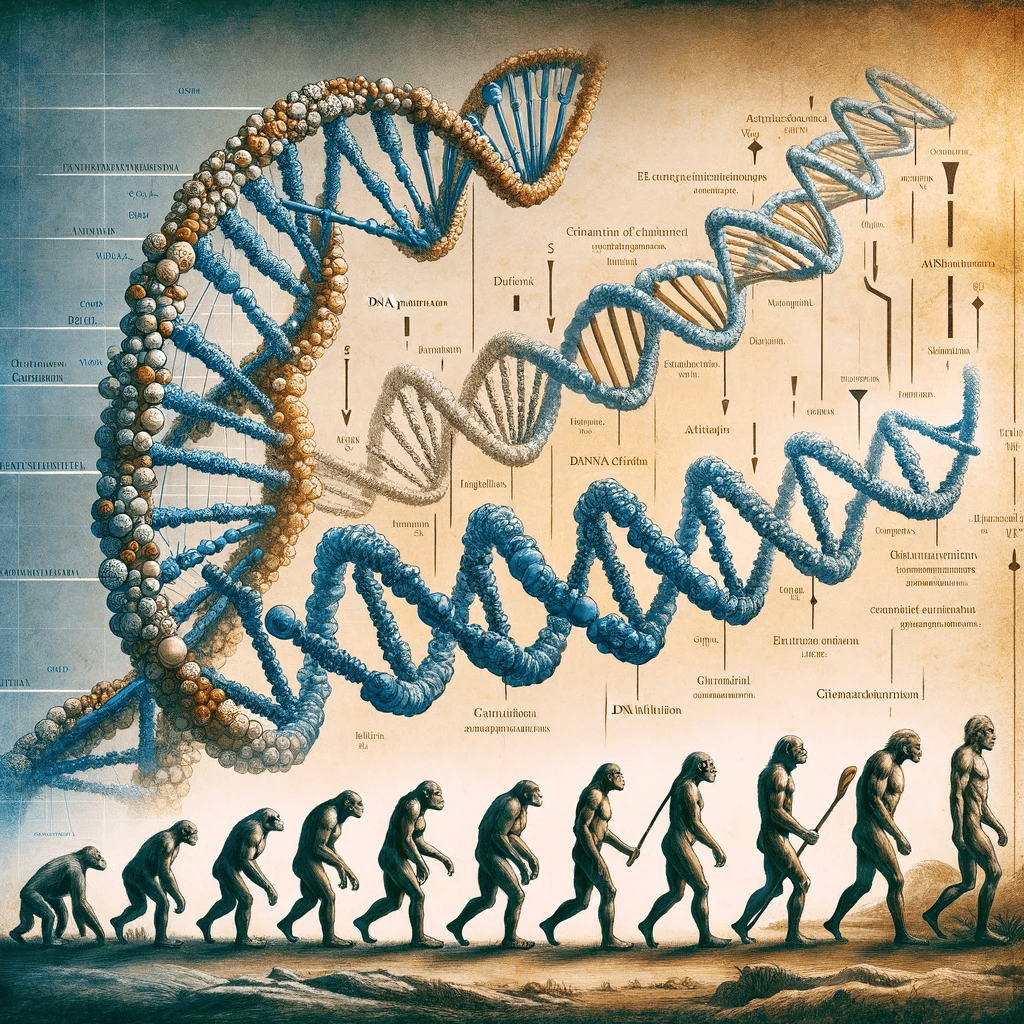Genetic Evidence of Human Evolution: Insights from DNA and Fossils


Genetic Evidence of Human Evolution: Insights from DNA and Fossils
The study of human evolution has been significantly advanced by examining genetic evidence found in ancient DNA and fossil records. The combined analysis of these two sources has provided invaluable insights into how Humans Evolve and their genetic adaptation to changing environments. In this article, we explore the remarkable synergy between genetics and paleontology in unraveling the complex narrative of human evolution.
Genetic Clues in Ancient DNA:
Ancient DNA, often called aDNA, is extracted from preserved biological materials such as bones, teeth, and hair. This remarkable genetic material can be found in fossils that are thousands or even tens of thousands of years old. By analyzing aDNA, scientists can trace the genetic lineage of ancient human populations and uncover genetic adaptations that occurred over time.
The Neanderthal Connection:
One of the most significant discoveries in human evolution came from the analysis of Neanderthal DNA. By comparing modern humans’ DNA with Neanderthals, scientists found evidence of interbreeding between the two groups. This interbreeding is believed to have occurred when modern humans migrated from Africa and encountered Neanderthals in Eurasia.
Genetic Adaptations to Climate and Environment:
Genetic evidence has revealed that as Homo sapiens migrated to various regions, they developed genetic adaptations that allowed them to thrive in diverse environments. For example, populations living at high altitudes grew genetic changes to better oxygenate their blood, while those in regions with limited sunlight developed adaptations for vitamin D synthesis.
Tracking Human Migration:
Genetic studies have helped reconstruct the complex patterns of human migration. By analyzing the genetic markers found in different populations, scientists can trace the routes taken by our ancestors as they colonized other parts of the world. These studies have contributed to our understanding of how Humans Evolved and dispersed from Africa to populate the globe.
Fossils and Morphological Evidence:
While genetic evidence provides a deep look into our evolutionary history, fossils, and morphological evidence visually represent human ancestors and their physical adaptations. Fossils, such as those of Australopithecus afarensis (commonly known as “Lucy“) and Homo naledi, have played a crucial role in reconstructing the human evolutionary tree.
The Tale of Lucy:
The discovery of the nearly complete skeleton of Lucy in Ethiopia in 1974 was a groundbreaking moment in paleoanthropology. Lucy’s fossil revealed a small, bipedal hominin species, providing evidence of early human ancestors who walked upright on two legs.
The Enigma of Homo naledi:
The discovery of Homo naledi in South Africa introduced a new species to the human family tree. This species exhibited a unique combination of primitive and modern features, challenging previous notions of human evolution. The discovery of Homo naledi highlighted the complexity of our evolutionary history.
Combining Genetic and Fossil Evidence:
The synergy between genetic and fossil evidence has allowed scientists to create a more comprehensive picture of human evolution. These two sources complement each other, filling gaps and providing a holistic understanding of how Humans Evolve and adapt over time.
Conclusion:
Studying genetic evidence in ancient DNA and examining fossil records have revolutionized our understanding of human evolution. These two complementary approaches have unveiled a complex and dynamic narrative of how Humans Evolve and adapt in response to changing environments and challenges.
Genetic evidence provides insight into the intricate genetic adaptations that have allowed our species to colonize diverse environments. At the same time, fossils offer a tangible connection to our ancestral past, showcasing the morphological changes that occurred along our evolutionary journey.
The integration of genetic and fossil evidence continues to shape the field of human evolution, shedding light on our shared history and revealing the remarkable story of how Humans Evolve and thrive on our planet.
Since you’re here …
… we have a small favour to ask. More people are reading Side-Line Magazine than ever but advertising revenues across the media are falling fast. Unlike many news organisations, we haven’t put up a paywall – we want to keep our journalism as open as we can - and we refuse to add annoying advertising. So you can see why we need to ask for your help.
Side-Line’s independent journalism takes a lot of time, money and hard work to produce. But we do it because we want to push the artists we like and who are equally fighting to survive.
If everyone who reads our reporting, who likes it, helps fund it, our future would be much more secure. For as little as 5 US$, you can support Side-Line Magazine – and it only takes a minute. Thank you.
The donations are safely powered by Paypal.














